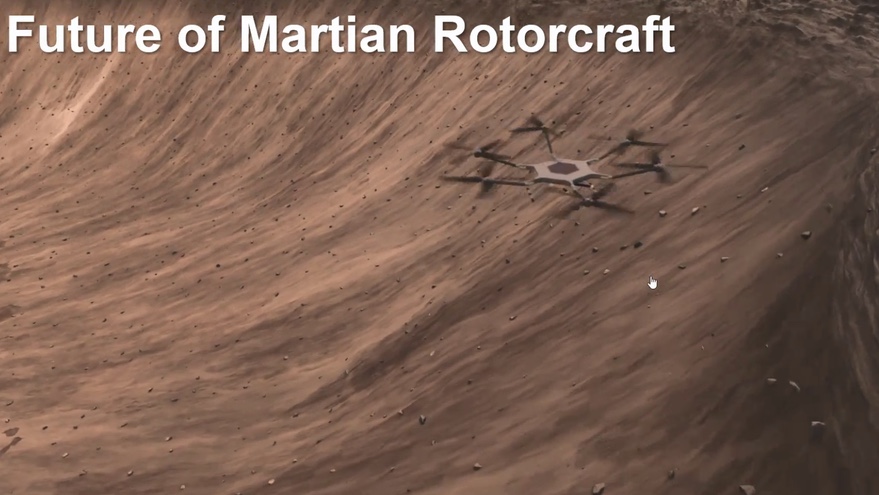WASHINGTON — With the Ingenuity helicopter continuing to demonstrate its abilities on Mars, NASA engineers are examining concepts for larger, more capable rotorcraft that could be flown on future missions.
Ingenuity performed its eighth flight on Mars June 21, traveling 160 meters and landing at a new site 133.5 meters from the Perseverance rover. The flight, which lasted 77.4 seconds, was the third since Ingenuity shifted from its original five-flight technology demonstration mission, proving it could fly in the thin Martian atmosphere, to serving as an operations demonstration working in conjunction with Perseverance.
Those flights are scheduled to continue for at least a few more months. “Part of what is going to be happening in the coming months are additional flights that demonstrate how this dance can work between the helicopter and the rover,” said Ken Farley, chief scientist for the Mars 2020 mission, during a June 21 meeting of NASA’s Mars Exploration Program Analysis Group (MEPAG).
That includes, he said, obtaining imagery of places that the rover cannot travel, such as a region called Seitah that is too rough for the rover to traverse. Helicopter images could also be used to create “terrain meshes” to enable longer drives by the rover by giving it information about terrain the rover’s own cameras, mounted on a mast, cannot see.
“That is going to continue for at least few more months, with a cadence of a couple of flights,” he said. “That is the level that we can easily make this coordination work.”
“We hope to fly many, many more,” said Teddy Tzanetos of the Jet Propulsion Laboratory, part of the Ingenuity team, at MEPAG. The helicopter has flown a cumulative distance of nearly one kilometer, including 266 meters in one flight. However, the project is considering “stretch capabilities” of individual flights up to one kilometer long, lasting up to three minutes. “That would really be pushing the limit of what the technology demonstrator is capable of.”
Data collected by Ingenuity is supporting planning of a future helicopter design by engineers at JPL, NASA’s Ames Research Center and AeroVironment. The Mars Science Helicopter would be a hexacopter, or six-rotor helicopter, with a mass of about 30 kilograms. Ingenuity, by contrast, weighs 1.8 kilograms. Mars Science Helicopter could carry as much as five kilograms of science payloads and fly up to 10 kilometers per sortie.
“We’re trying to look at the science applications: what science is enabled by having the aerial dimension added,” he said. That includes traveling to locations inaccessible to rovers, such as the sides of cliffs and into caves.
In a white paper submitted as part of the ongoing planetary science decadal survey, scientists identified several applications for the Mars Science Helicopter, from studies of Martian geology and atmosphere to examination of “special regions” of astrobiological interest without risk of contamination.
One notional mission described in the paper is to visit an outflow channel called Mawrth Vallis that is difficult for rovers to access, collect samples at several locations and then return them to a lander for analysis. “We’re open to ideas and new concepts,” Tzanetos said.
He did not discuss potential costs or flight opportunities for Mars Science Helicopter, although the white paper notes that “there are viable roles for [Mars Science Helicopter] across a range of mission classes,” including NASA’s Discovery and New Frontiers classes. A simpler helicopter design included in the white paper, essentially a scaled-up version of Ingenuity, “is sufficiently low mass and low volume that it should be considered in all future launch opportunities to Mars’ surface,” the paper concluded.
Agency officials said earlier this year they were not considering adding a helicopter to its next lander mission, the Sample Return Lander that is part of the Mars Sample Return program and is scheduled for launch no earlier than 2026.
